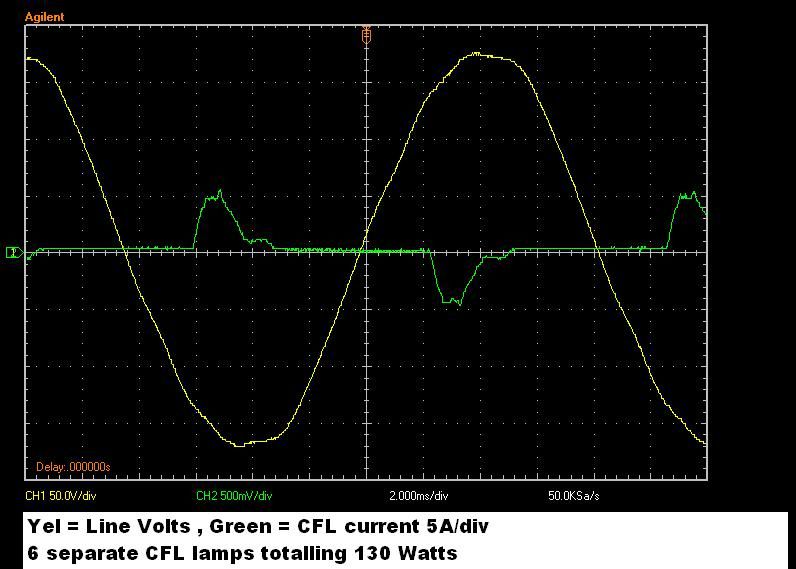Ragin Cajun
Senior Member
- Location
- Upstate S.C.
Been wondering just how "accurate" the label on these things is.
13W CFL, 120V, 0.200A says the label.
I have a neat device that indicates volts, amps, kw, va kwh, hz, pf, and hours. It has proved quite accurate where ever I've used it.
Plugged in the above CFL lamp.
121.7V
0.360 A
59.9 Hz
25 W
44 va
0.57 pf.
What a POS!!
I knew the pf on these things was bad, but 0.57, WHEW!!
RC
13W CFL, 120V, 0.200A says the label.
I have a neat device that indicates volts, amps, kw, va kwh, hz, pf, and hours. It has proved quite accurate where ever I've used it.
Plugged in the above CFL lamp.
121.7V
0.360 A
59.9 Hz
25 W
44 va
0.57 pf.
What a POS!!
I knew the pf on these things was bad, but 0.57, WHEW!!
RC

